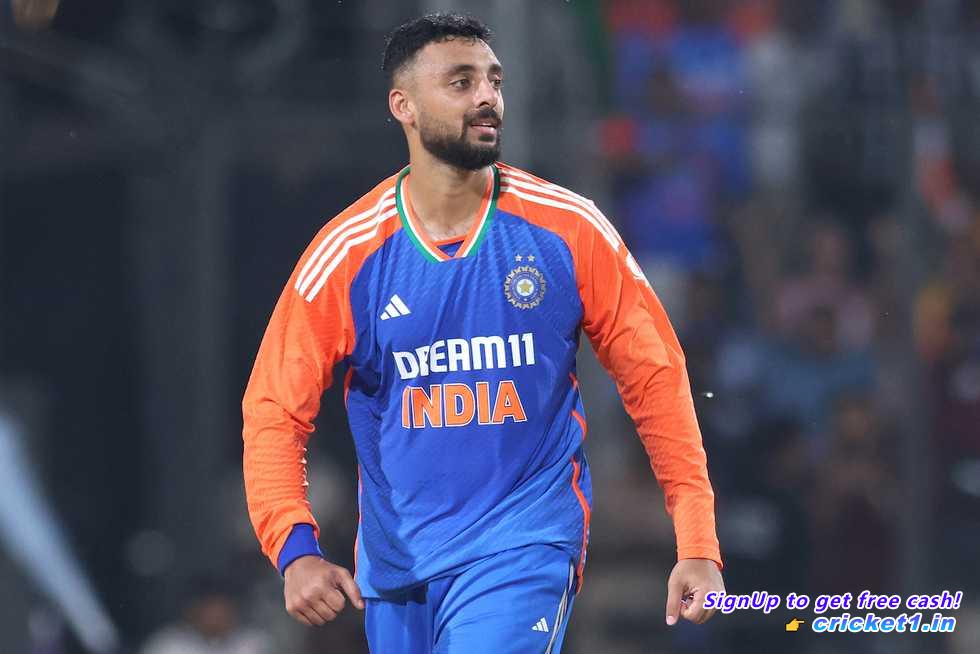
A couple of IPL seasons ago, a talented bowler named Varun Chakaravarthy began to stand out not only for his performance but also for the subtle adjustments he was making to his bowling technique. These changes, particularly his integration of overspin into his deliveries, led to a highlight-worthy dismissal of Jitesh Sharma with a sharply bouncing leg break during IPL 2023. This wicket was not only memorable but also a testament to the benefits of his newfound technique. It took time for Varun to perfect this approach and successfully incorporate overspin into his variety of deliveries, but a year and a half later, everything came together admirably in Gwalior. Here, he achieved career-best figures of 3 for 31 in his first T20I match after a three-year hiatus.
Varun Chakaravarthy’s recent performance was a reflection of his transition from a bowler who primarily relied on side-spin to one who has now embraced overspin wholeheartedly. “It’s a subtle yet crucial technical aspect of spin bowling,” Varun explained after India’s first T20I against Bangladesh. He added that it took more than two years to fully adopt this technique, a journey that saw extensive trials in tournaments like the TNPL and IPL. While mental preparation played a part, the bulk of his effort was directed towards refining his technical skills.
His open acknowledgment of this transition parallels his reflections on the time he spent away from the Indian team. During this period, he missed 86 T20I matches, marking one of the longest gaps for an Indian player between appearances, second only to Khaleel Ahmed. For Varun, his return was akin to a “rebirth,” a term he used to describe the emotional and physical significance of wearing the Indian jersey again after a prolonged absence.
In a heartfelt sideline interview with Jio Cinema, Varun admitted, “After three long years, it was definitely emotional for me.” Returning to the field as part of Team India evoked a sense of renewal and motivated him to stay rooted in the present. Varun stressed the importance of adhering to his process, something he consistently followed during the IPL. He conveyed a desire to avoid overthinking or showing exuberance on the field as he worked to stabilize his place in the team.
Varun’s journey back to the Indian team was punctuated by challenges and a sense of anticipation whenever team selections were announced without his name. The persistent exclusions served as a catalyst for him to persevere. “Whenever the squad was announced, I found myself questioning, ‘Why is my name not there?’ That thought was my constant motivator to not give up,” Varun recalled.
. As a result, he devoted significant effort to domestic games to enhance his skills and maintain his competitive edge.
Upon his return, Varun faced immediate pressure. The team management informed him of his selection shortly before the match, leaving scant time for mental preparation. The first over didn’t go as planned, conceding 15 runs, and a sharp chance to take a wicket slipped by. It was far from the ideal start for someone who had waited so long for another chance. However, Varun’s resilience allowed him to seize the opportunity to make amends, and thanks to Suryakumar Yadav’s confidence in him, he got another over to set things right.
His first international wicket in three years came poetically through another leg spinner, similarly packed with overspin, reminiscent of the delivery he used against Jitesh Sharma years back. As Varun found his rhythm, a change of ends bolstered his confidence, resulting in crucial wickets: Jaker Ali fell to a misread googly, and Rishad Hossain succumbed to a top-edged leg break. These dismissals showcased his growing expertise and adaptation to varying match situations.
With young leg-spinner Ravi Bishnoi also vying for a place in the team, the competitive atmosphere was palpable. Nevertheless, Varun perceived this not as rivalry but as camaraderie. He acknowledged the support from his teammates, including Bishnoi, who encouraged him during the match. “There is good competition and camaraderie,” Varun stated, emphasizing the necessity for such internal competition to push each other towards excellence.
In the face of this pressure and emotional rollercoaster, Varun remained modest. “Contributing to the team makes me very happy,” he remarked. While reflecting on his mixed performance, he noted the unpredictability inherent in T20 cricket, demonstrating his grounded approach.
The journey back to India’s T20I side was arduous, with each wicket in Gwalior serving as a symbol of persistence and self-belief. After three challenging years, Varun Chakaravarthy has evolved from a mystery spinner to a bowler who has mastered the art of overspin through sheer dedication and refinement. With his technical evolutions and team support, Varun’s “rebirth” as a leading bowler may not only secure his place on the Indian team but also enhance his contribution to its future successes.

